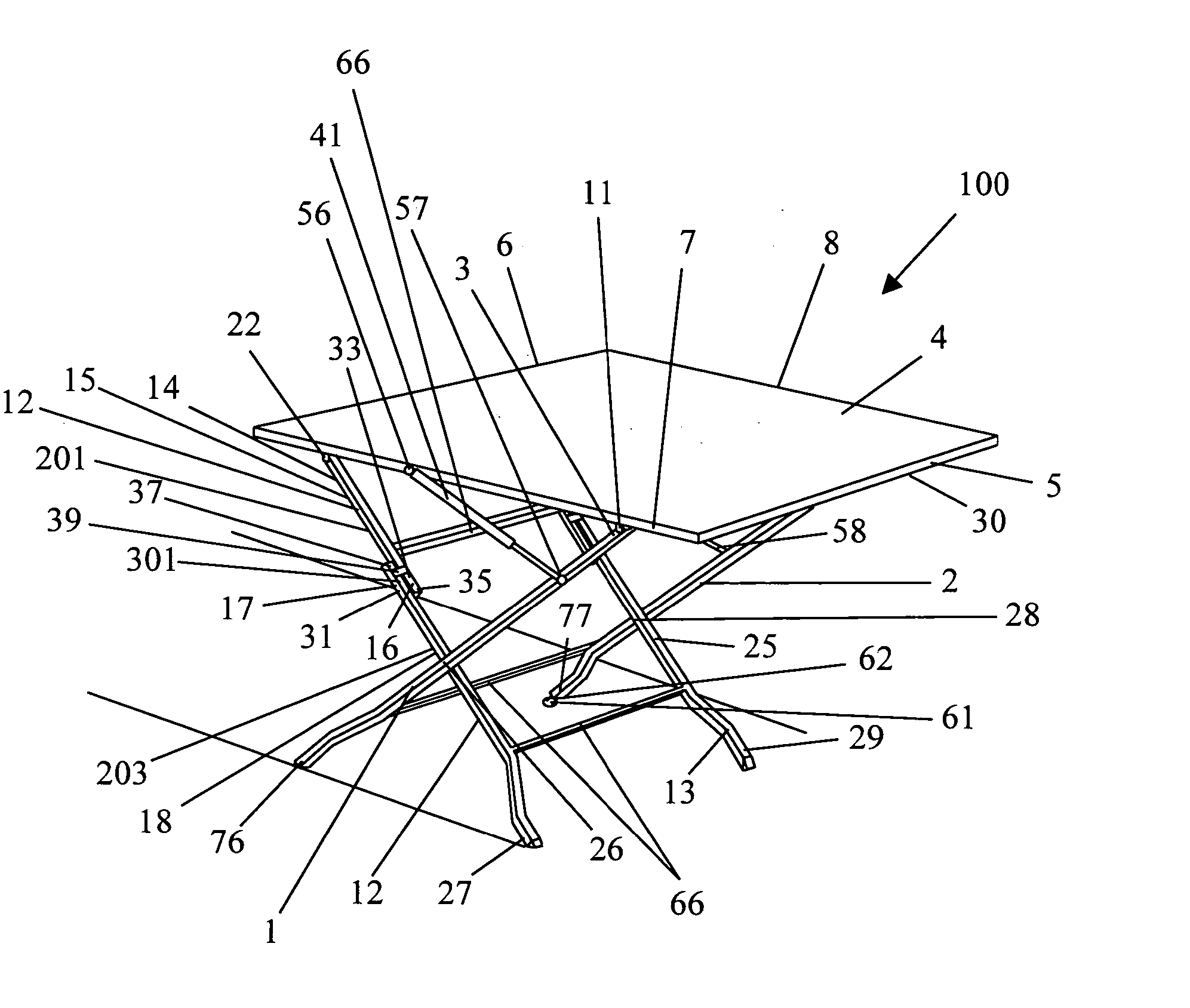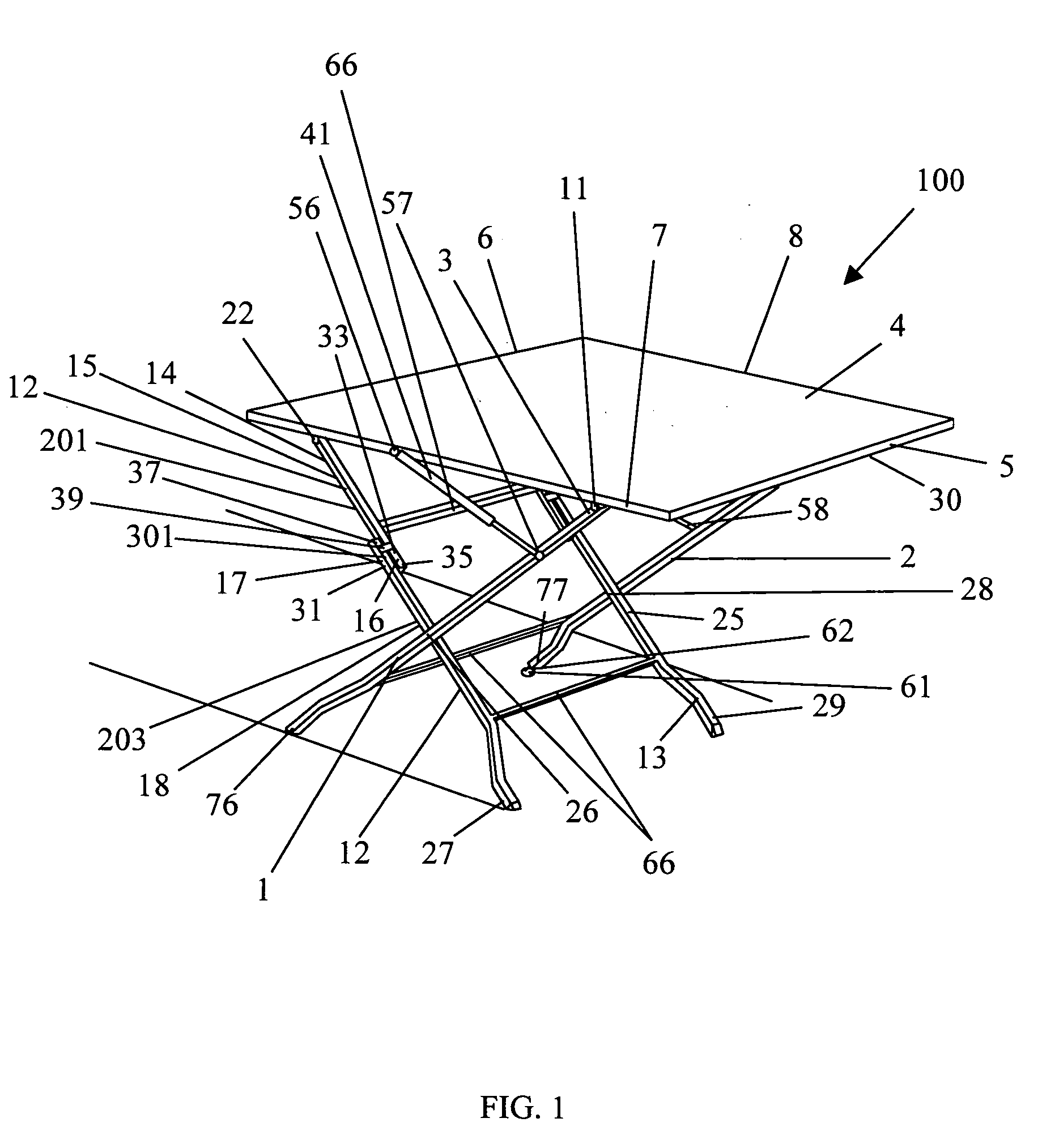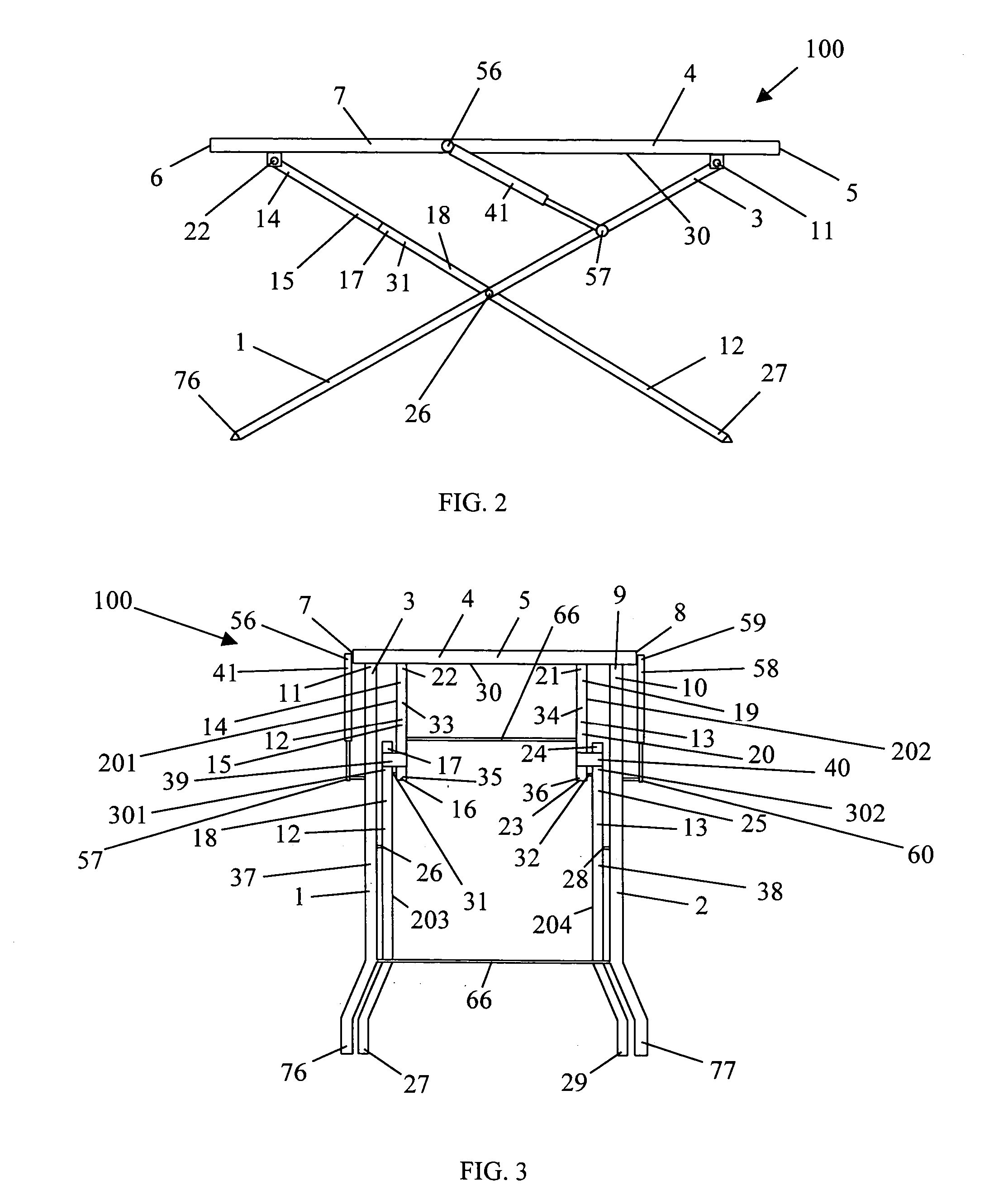Folding work table
a work table and folding technology, applied in the field of tables, can solve the problems of not having wheels or handles to facilitate the transportation of the table, no device to assist in the unfolding of the legs, and not having a handle to facilitate the transport of the table, etc., and achieves the effect of not being able to resist the reverse motion smoothly
- Summary
- Abstract
- Description
- Claims
- Application Information
AI Technical Summary
Benefits of technology
Problems solved by technology
Method used
Image
Examples
Embodiment Construction
[0033] A first embodiment of the Folding Work Table includes, as illustrated in FIG. 1, FIG. 2, and FIG. 3, two one-piece legs 1, 2. A first end 3 of the first one-piece leg 1 is pivotally attached to a tabletop 4 having a first end 5, a second end 6, a first side 7, and a second side 8. Similarly, a first end 9 of the second one-piece leg 2 is pivotally attached to the tabletop 4 but at a point of attachment 10 which is closer to the second side 8 of the tabletop 4 than is the point of attachment 11 for the first end 3 of the first one-piece leg 1.
[0034] Two two-piece legs 12, 13 also are included. A first end 14 of a first segment 15 of the first two-piece leg 12 is pivotally attached to the tabletop 4. A second end 16 of the first segment 15 of the first two-piece leg 12 is pivotally attached to a first end 17 of a second segment 18 of the first two-piece leg 12. Likewise, a first end 19 of a first segment 20 of the second two-piece leg 13 is pivotally connected to the tabletop ...
PUM
 Login to View More
Login to View More Abstract
Description
Claims
Application Information
 Login to View More
Login to View More - Generate Ideas
- Intellectual Property
- Life Sciences
- Materials
- Tech Scout
- Unparalleled Data Quality
- Higher Quality Content
- 60% Fewer Hallucinations
Browse by: Latest US Patents, China's latest patents, Technical Efficacy Thesaurus, Application Domain, Technology Topic, Popular Technical Reports.
© 2025 PatSnap. All rights reserved.Legal|Privacy policy|Modern Slavery Act Transparency Statement|Sitemap|About US| Contact US: help@patsnap.com



